

Re-potting - A necessary chore with Orchids
Potting Orchids is not difficult but it is different from potting tropical plants. Most Orchids grow naturally in tree branches with their roots securely attached to the branches. Their roots are exposed to the air. Over time they have evolved to grow well in this environment, but we insist on growing them in pots.
What we need to do is to duplicate the environment as nearly as possible to the open air. The Orchids need this air circulation over their roots.
We use a loose potting mix to get this result. Fir bark is the most common because it does not pack down, hold a reasonable but not excessive amount of water, and is cheap. Their are many other types of medium used by different growers. Remember all mediums work, they just work differently.
Get Organized
Decide if we need a larger pot
Chose the correct potting medium
Have all supplies on hand
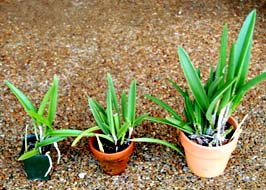 Pot size is important for Orchids.
Pot size is important for Orchids.
Potting Mediums
First remember that all potting mediums work, but they work differently.
Chose a medium that matches your watering style and growing conditions.
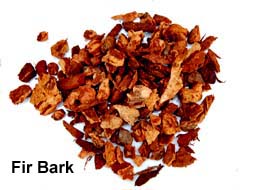 The most common medium is Fir Bark. It is light and airy, drains well and is readily available. It is organic so it decays over time and must be replaced periodically. It is often mixed with charcoal and perlite. Charcoal is smaller and keeps a small amount of water close to small roots. Perlite, called sponge rock, holds a percentage of water thereby slowing the drying process.
The most common medium is Fir Bark. It is light and airy, drains well and is readily available. It is organic so it decays over time and must be replaced periodically. It is often mixed with charcoal and perlite. Charcoal is smaller and keeps a small amount of water close to small roots. Perlite, called sponge rock, holds a percentage of water thereby slowing the drying process.
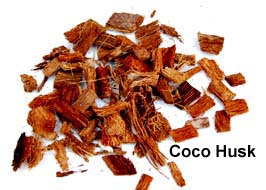 Coco husk is very similar to Bark, but holds more water and is a sterile mix lacking in any beneficial microbes. It may may have varying amounts of salt. Be careful of the brand you chose. If you decide to use Coco husks, it is safer to rinse the mix well before use.
Coco husk is very similar to Bark, but holds more water and is a sterile mix lacking in any beneficial microbes. It may may have varying amounts of salt. Be careful of the brand you chose. If you decide to use Coco husks, it is safer to rinse the mix well before use.
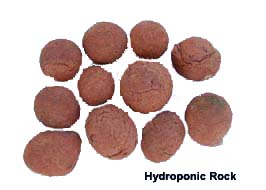 Hydroponic rock is a newer medium that is growing in popularity. It is an expanded clay product that being inorganic will never decompose. It dries much faster than Bark or Coco. It can not hold more than 8% water reducing the dangers of rot root. When used in a semi-hydro (s/h) manner with a saucer of water under the pot, It wicks water into the pot, keeping a uniform amount of water at the roots.
Hydroponic rock is a newer medium that is growing in popularity. It is an expanded clay product that being inorganic will never decompose. It dries much faster than Bark or Coco. It can not hold more than 8% water reducing the dangers of rot root. When used in a semi-hydro (s/h) manner with a saucer of water under the pot, It wicks water into the pot, keeping a uniform amount of water at the roots. 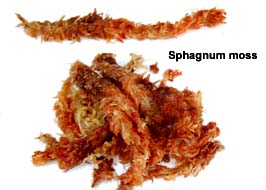 Paphiopedilum, Zygopedilum and many terrestrial Orchids.
Paphiopedilum, Zygopedilum and many terrestrial Orchids. Orchids can be mounted, grown in baskets or grown in anything.
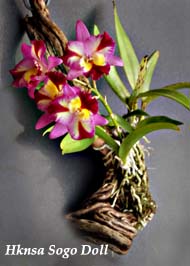
Orchids grow naturally on tree branches and mounting them on various supports duplicates these conditions. Wood, tree fern, and cork are common types.
We use grapevine rather than driftwood. Pine driftwood deteriorates in a couple of years while the grapevine lasts 12-15 years. Driftwood from salt water needs to be 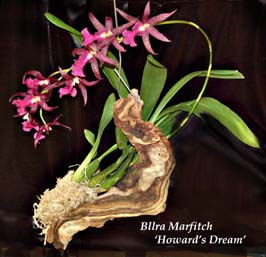 soaked for weeks to remove the salt. Grapevine is extremely attractive in itself and readily available. It also does not have the residual salt content of driftwood.
soaked for weeks to remove the salt. Grapevine is extremely attractive in itself and readily available. It also does not have the residual salt content of driftwood.
Fertilizers - The Basics Potting Mediums - Water - Light - Temperature - Blooming - Repotting